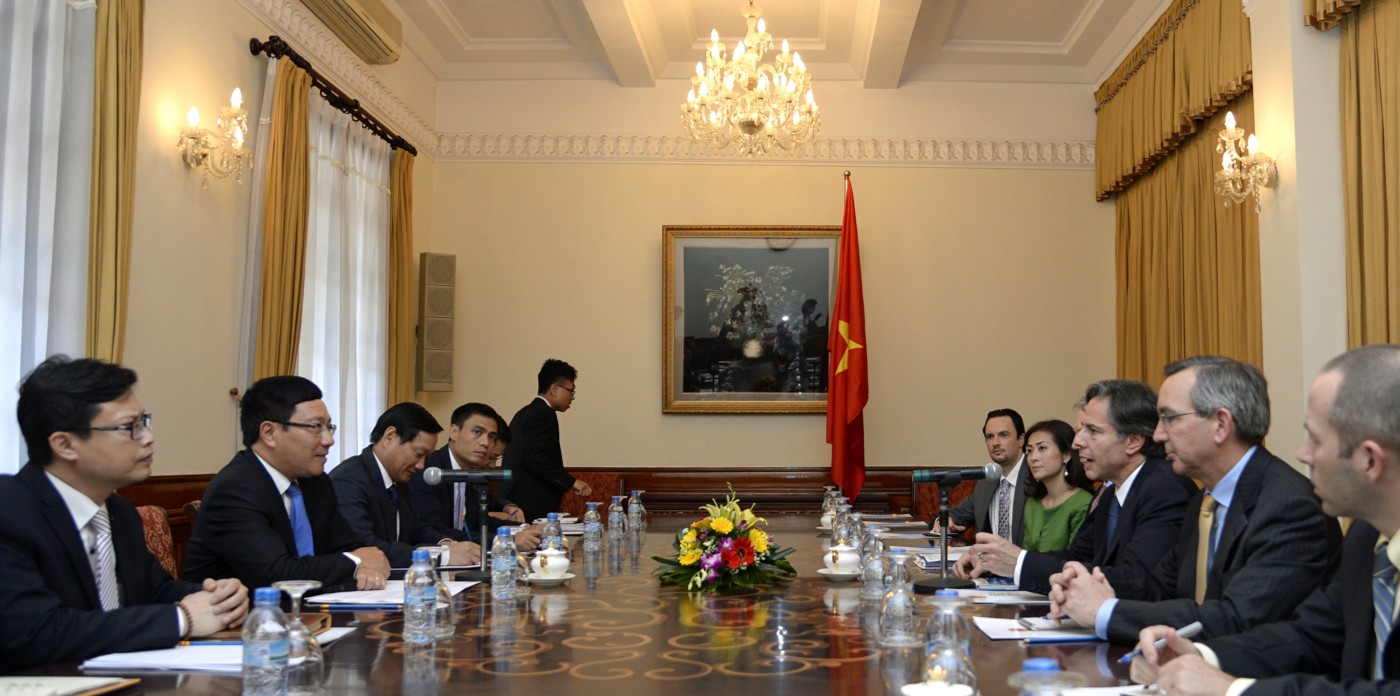This week, the United States and Vietnam will open a new chapter in our history as General Secretary Nguyen Phu Trong travels to Washington, the first visit by Vietnam’s Communist Party General Secretary to the U.S. since our two nations established relations 20 years ago.
 |
| Deputy Secretary Antony Blinken meets with Vietnamese Deputy Prime
Minister and Foreign Minister Pham Binh Minh in Hanoi, Vietnam on May
18, 2015. |
This year, we are hard at work on one of our most ambitious and important efforts yet: the Trans-Pacific Partnership, a 12-nation trade deal that, if achieved, will establish high standards on labor, intellectual property, and the environment. It will unlock vast new markets, promote investment, encourage innovation, and support higher-paying jobs. It will level the playing field between state-owned enterprises and private companies. And it will have strong, enforceable provisions that uphold the rights of workers, prohibit forced labor, and protect our forests and oceans.
But this trade agreement is about more than economic dividends. It is a
strategic opportunity for the entire region — an unprecedented chance to
advance the values and practices that will unleash the potential of our
nations and improve the lives of our people.
When I traveled to Vietnam in May, I caught a glimpse of this future. In Ho Chi Minh City, I met with a group of students who were creating videos about innovative solutions for environmental problems in their communities. The films were high-quality productions and extraordinarily effective. I asked the students how they got interested in film and was surprised to learn that they had no formal training in the arts. They had all learned about video production at the American Center.
Their energy and curiosity is widely reflected in their peers. Today, — a number that goes up to 88 percent among those under the age of 30. In 1995 there were 794 Vietnamese students enrolled at American universities. Last year there were nearly 17,000 — more than come from the U.K., Germany, France, or Brazil. Today, 22 million Vietnamese are on Facebook and 35 million are connected to the internet, where they speak their minds and argue their opinions freely.
In the 21st century, this is how we define the true wealth of a nation. Not just by its natural resources, economic strength, or military might. But by a nation’s ability to maximize the potential of its people — to unleash their creativity, innovation, and entrepreneurial spirit and make room for them to argue, criticize, and challenge conventional wisdom.
As Vietnam increasingly opens its doors, it will reap the rewards of progress for its people. This transformation will not happen overnight. But the Trans-Pacific Partnership offers a powerful and pragmatic incentive for accelerating reform and fostering a free and open society that will be more deeply connected to the United States.
Twenty years after the leadership of President Clinton, Senator McCain,
and then-Senator Kerry led to this historic opening between our two
countries, we have only just begun to tap into the potential of our
relationship. As we welcome General Secretary Trong this week, we send a
powerful message to the world: that formerly bitter adversaries can
become friends and, having made peace, we are now building a partnership
that will advance the stability and prosperity of our citizens and the
world beyond.

Leave your comment on this story